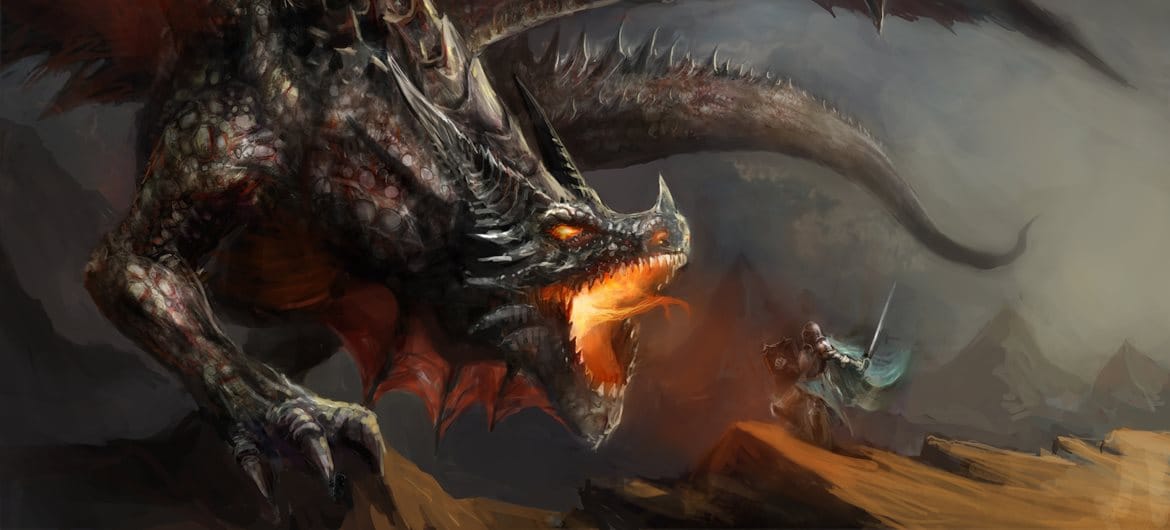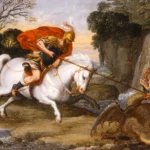Dragons! These fire-breathing, treasure-hoarding creatures of myth and legend have captivated our imaginations for centuries. But how much do you really know about these magnificent beasts?
Get ready to uncover 10 amazing facts about dragons! From their global presence in mythology to their enduring popularity in pop culture, we’ll delve into the legends, powers, and even the potential weaknesses of these legendary creatures. We’ll also explore adorable baby dragon nicknames and the symbolism behind the 🉠emoji. Buckle up and get ready for a fantastical journey into the magical realm of dragons!
10 Amazing Facts About Dragons
Let’s dive into some incredible facts about these legendary beasts:
- Dragons are practically everywhere! Seriously, dragon lore exists in cultures all over the world, from ancient China to the Vikings of Scandinavia. It’s fascinating how these stories, despite vast distances and cultural differences, often share similar themes. This widespread presence makes you wonder about the origins of these mythical creatures and how their stories traveled across the globe. For a deeper dive into this cultural phenomenon, check out these captivating Dragon legends across different cultures.
- East vs. West: Two sides of the same coin? Eastern and Western cultures often view dragons in contrasting ways. In the East, dragons are often seen as wise, benevolent protectors, more like powerful spirit guides than fearsome monsters. In the West, however, dragons tend to be portrayed as fierce, fire-breathing beasts that need to be slain by a valiant hero.
- Dragons: Inspired by real life? Okay, so we haven’t found any actual fire-breathing dragons (yet!), but some experts suggest that ancient people may have discovered dinosaur fossils and, mistaking them for dragon bones, built stories around them. It’s a fascinating theory that links myth and reality in a surprising way.
- Did ancient fossils fuel dragon legends? Imagine stumbling upon the massive skeleton of a dinosaur – wouldn’t you think it belonged to a dragon? The discovery of these prehistoric bones could have contributed to the development of dragon lore, as people tried to rationalize these extraordinary remains.
- Dragons: Still going strong! Dragons aren’t just relics of the past; they’re very much alive in our modern world. From books and movies like “The Hobbit” (featuring the fearsome Smaug) to video games and TV shows like “Game of Thrones” (with Daenerys Targaryen’s iconic dragons), these mythical creatures continue to capture our imaginations. Even the adorable Toothless from “How to Train Your Dragon” proves that dragons have a timeless appeal that transcends generations.
- That fiery breath, though! One of the most iconic things about dragons is their ability to breathe fire. While there’s no scientific evidence to support this (yet!), it’s a powerful image that symbolizes the raw, destructive power of nature. Some theories suggest that ancient people may have witnessed volcanic eruptions or lightning strikes and attributed these natural phenomena to dragons.
- More than just monsters: Dragons aren’t always portrayed as terrifying villains. In many cultures, they’re seen as guardians of vast knowledge and treasure, or even symbols of good luck and prosperity. This duality – terrifying yet awe-inspiring, destructive yet protective – makes them even more intriguing.
- Dragons come in all shapes and sizes! Don’t think for a second that all dragons are the same. Some are massive and winged, while others are serpentine and earthbound. Some breathe fire, others ice, and some might even control the weather! The variations are endless, which is a testament to the boundless creativity of the human imagination.
- Those scales aren’t just for show! In many myths and legends, dragon scales are said to possess magical properties, granting the wearer incredible strength, protection from harm, or even good luck. Imagine if we could find some of these scales today! What secrets might they hold?
- Dragons: Inspiring stories for generations: Western literature and cinema have given us some of the most memorable dragon encounters ever. From the epic poem “Beowulf” to classic fantasy novels like “The Lord of the Rings” and even the beloved “Harry Potter” series, these stories explore the complex relationship between humans and dragons, reminding us of the power of courage, ingenuity, and sometimes, even friendship, in the face of overwhelming odds.
What are some cool facts about dragons?
Ready to dive into some fascinating dragon details? Let’s go!
- Dragons are everywhere! You might think of dragons as primarily Western creatures, but they appear in cultures all over the world, from the friendly and wise dragons of Asia to the more intimidating ones in European stories.
- Masters of Disguise: One of the coolest things about dragons is their rumored ability to shapeshift. They can supposedly transform into other animals or even humans! This makes them super mysterious and unpredictable – you never really know who (or what) you’re dealing with.
- Treasure? It’s Mine, All Mine! Dragons are practically synonymous with treasure. Legends say they fiercely guard their hoards – piles of gold, jewels, and magical artifacts – as a display of their power and wealth.
- Don’t Get Burned: This one’s pretty obvious: dragons breathe fire. It’s their signature move! Whether it’s a massive inferno or a well-aimed blast, their fire-breathing skills are what make them truly fearsome.
- Did Dinosaurs Inspire the Dragon Myth? Some scientists believe that ancient people might have found dinosaur fossils and mistaken them for dragon bones! It’s a compelling theory as those massive skeletons and scary skulls could have easily sparked the imagination.
- Calling All Storms! In many cultures, dragons are linked to the weather, especially in Eastern traditions. They can supposedly create storms, bring rain, or even whip up a rainbow, demonstrating their influence over nature.
- Dragons with a Healing Touch: You usually think of dragons as fierce fire-breathers, but in some cultures, they’re actually healers. Asian dragons, in particular, are said to have powers that can cure illnesses, with their scales, blood, and even their breath thought to have magical healing properties.
- The Brainy Dragons: In some parts of the world, dragons are revered as symbols of wisdom and knowledge. They’re often depicted guarding libraries and protecting ancient secrets.
- Dragons on the Big Screen: Let’s face it, dragons are pop culture icons. We see them everywhere – books, movies, video games – you name it!
- The Ultimate Symbol of Power: Throughout history, dragons have represented strength, power, and awesomeness. They’re like the untamed forces of nature, reminding us of the wild potential that exists within ourselves.
Thinking More About Dragons:
While we’ve learned a lot about these mythical creatures, there’s still a ton that we don’t know. For example:
- Where did dragon myths REALLY come from? While the dinosaur theory is intriguing, it’s just one possibility among many. There’s still debate about how these legends originated and spread throughout the world.
- Did dragons ever exist in real life? As much as we’d love to believe it, there’s no scientific evidence to suggest that dragons were ever real creatures. But hey, a little mystery keeps things interesting, right?
What’s so great about dragon lore is that it’s always evolving. As we uncover new information and interpretations, our understanding of these mythical beasts continues to grow. So keep exploring, keep asking questions, and who knows what other cool dragon facts you might discover!
Why Are Dragons Amazing?
Dragons aren’t just cool-looking mythical creatures; they’re downright awesome! We’ve been fascinated by them for centuries, and it’s no wonder. These legendary beasts pop up in stories all over the world, from ancient myths to modern movies.
One of the things that makes dragons so captivating is their incredible diversity. They’re not a one-size-fits-all kind of creature. Eastern dragons, for example, are often seen as wise and benevolent protectors, associated with good fortune and natural forces. On the other hand, Western dragons often take on the role of fearsome guardians, fiercely guarding their hoards of treasure and breathing fire at anyone who dares to come close.
Think about their shapeshifting abilities! Imagine a creature that can change its form at will, transforming into a bird, a human, or even mist. This ability just adds to their mystique and makes them even more difficult to pin down.
Speaking of out of reach, let’s talk about those treasure hoards! Dragons are practically synonymous with riches, often depicted as guardians of vast piles of gold, jewels, and magical artifacts. This connection to wealth and power just adds another layer to their allure.
Where did these incredible creatures come from? Well, that’s a question that has puzzled scholars and storytellers for ages. Some experts suggest that ancient people might have discovered dinosaur fossils and mistaken them for the remains of dragons, sparking the initial tales. Others believe that dragons represent a primal fear of predators, embodying the dangers of the natural world.
Whatever their origins, dragons continue to capture our imaginations. They’re on our screens, in our books, and even in our video games. Dragons represent the untamed spirit, the raw power that resides within us all. They remind us of the boundless possibilities of imagination and the enduring appeal of a good story.
What are dragons famous for?
We’ve already talked a bit about dragons, these mythical creatures that seem to pop up in stories all over the world. But what is it about dragons that makes them so captivating? Why do they hold such a strong grip on our imaginations? Let’s dive into ten intriguing aspects of dragons that contribute to their enduring fame:
- Dragons might just be the wisest creatures around. Okay, we can’t really know, but many cultures portray dragons as ancient beings with a deep well of knowledge. They’ve seen it all, learned it all, and represent that endless quest for wisdom we humans crave.
- Let’s face it, dragons are powerful, majestic figures. They’re often linked to ideas of strength, bravery, and leadership. Some even believe dragons were the ancestors of emperors and kings! Think about that kind of lineage.
- Dragons breathe fire! This one’s a no-brainer. It’s probably their most iconic trait, and it’s easy to see why. Fire is both beautiful and dangerous, representing raw power and a connection to something primal.
- Dragons love their treasure. And we’re not talking about a piggy bank here. We’re talking mountains of gold, glittering jewels, and priceless artifacts. This love of treasure makes them a bit greedy, sure, but it also adds to their allure. Who wouldn’t be tempted by a dragon’s hoard?
- Shapeshifting tricksters! Dragons are often said to have the power to change their forms, becoming different animals or even humans. Throw in some magical abilities, and you’ve got a recipe for a truly enigmatic creature. You never know what you’re gonna get.
- Guardians of the sacred. Temples, mountains, hidden realms… dragons are often depicted as protectors of important places. They stand guard, ensuring that these sacred spots remain untouched and revered.
- Do dragons control the weather? Some cultures believe they do! Imagine a dragon summoning a mighty storm or painting a rainbow across the sky. They could be forces of nature, both destructive and life-giving.
- Inspiring art for ages. From ancient cave paintings to modern movies, dragons have been sparking our creative flames for centuries. They’re the stuff of legends, and their presence in our art only reinforces their hold on our imaginations.
- Dragons are everywhere! East to West, across cultures and continents, dragons appear in different forms, reflecting the unique beliefs and stories of the people. Their widespread appeal is a testament to something universal about these mythical beasts.
- What we wish we could be. Dragons embody many human desires – wisdom, power, a thirst for adventure. They represent that untamed spirit within us, the part that yearns to explore the unknown and overcome any challenge.
While we may never know for sure if dragons existed as real, physical creatures, their impact on our cultures and our imaginations is undeniable. They are powerful symbols, reflecting our hopes, fears, and the enduring power of storytelling.
What special powers do dragons have?
These mythical beasts are practically bursting with magical abilities! Depending on where in the world the stories come from, dragons can have different strengths and skills.
Think about fire! It’s like their trademark move. Many tales describe dragons breathing fire, using it to fend off enemies or blast through obstacles. It’s a powerful image we see repeated in books and movies.
And their wings? Forget airplanes! These guys are the original masters of the sky. With their huge, powerful wings, they can soar through the air, using this skill for everything – attacking, traveling long distances, or just enjoying a scenic flight.
But dragons are more than just brute force and flying aces. They’re often depicted as incredibly intelligent beings. Some stories even suggest they have a knack for magic. And don’t even get me started on their communication skills! Not only can they understand each other, but they can also chat with humans and other animals. Now that’s impressive!
Have you heard about shapeshifting? It’s like something out of a fantasy novel, but some legends claim dragons can change their appearance at will. One minute they’re a fearsome dragon, the next they could be a human, an animal, or even something completely unexpected.
And hold on to your hats because some stories suggest dragons have a hand in the weather! We’re talking summoning storms, calling down lightning, maybe even causing droughts. It’s as if they have the power of nature itself at their fingertips.
But here’s where it gets really interesting – healing. Some believe dragons have a magical touch that can mend wounds, cure illnesses, and even bring someone back to life.
We can’t forget their incredible senses. Imagine being able to see in total darkness as clearly as you see in daylight. That’s what it’s like for dragons with their exceptional night vision.
And language? It’s no barrier for these guys! They’re often described as multilingual masters, fluent in human languages and probably a few others we haven’t even heard of.
But the most intriguing power of all? Their incredibly long lifespan! We’re talking centuries, maybe even immortality in some cases. It makes you wonder what secrets they must hold after all that time.
Keep in mind, these are just some of the powers attributed to dragons in myths and legends. There’s still so much we don’t know, and that’s part of what makes them so fascinating!
What is a Dragon’s Greatest Weakness?
We’ve talked about how strong and powerful dragons are, but like any creature, they probably have weaknesses too. So, what exactly are these mighty beasts vulnerable to?
Well, it really depends on which dragon tale you’re listening to! Different cultures see dragons in different ways, and their weaknesses tend to change along with those stories.
Think of it like this: imagine a fire-breathing dragon from a classic fairy tale. Some stories might say its scales are super tough everywhere except for one specific spot, maybe under its belly or behind its ear. That one unprotected spot could be its downfall! This weakness might be to something simple, like a specific metal – maybe it’s terrified of iron, or silver burns it like the sun.
And then there are the dragons who are basically giant flying volcanoes of rage. They might be super strong, but all that anger could make them reckless. A clever hero might be able to outsmart it, tricking it into making a mistake or leading it into a trap. Think of it like this: you wouldn’t challenge a dragon to a fistfight, you’d try to outsmart it!
Now, just because a dragon is big and scary doesn’t mean it’s a genius. Some dragons might be as smart as a scholar, knowing tons of ancient secrets and spells. But others? They might be easily fooled or distracted.
Let’s not forget about magic! Dragons are practically made of magic themselves, so it makes sense that they’d be vulnerable to it too. Maybe there’s a special kind of spell that can drain a dragon’s fiery breath, or an enchanted weapon that can pierce its scales. Some stories even say dragons can be controlled by certain magical objects, like a mystical amulet or a powerful staff.
Here’s another thing to think about: dragons are often connected to nature in some way. Imagine a dragon who draws its power from a specific mountain, or a forest, or even the moon. If something were to happen to that place – maybe the mountain crumbles, or the forest is burned, or the moon is hidden by an eclipse – the dragon might lose its power, or become vulnerable.
The most important thing to remember is that dragons are complex creatures, just like people. They have strengths and weaknesses, and those weaknesses can be exploited. Whether it’s a physical vulnerability, a personality flaw, or a magical weakness, there’s always a way to defeat even the mightiest of dragons.
Who knows, maybe the real weakness of a dragon isn’t something we can see, but something we can feel: like compassion, or mercy, or even love. Those are stories for another time, though!
What is a dragon baby called?
So, we’ve talked about these majestic, fire-breathing beasts, but what about their little bundles of scales? You know, the ones that probably still trip over their own wings and maybe haven’t quite figured out how to breathe fire yet (imagine the cute little smoke puffs!).
Well, you won’t hear many people calling them “dragon babies,” even though it makes perfect sense. The most common name you’ll come across is a wyrmling. It’s a cool, almost mystical-sounding word that perfectly captures the image of a young dragon, don’t you think?
But wait, there’s more! Just like we have tons of words for baby animals (puppy, kitten, calf – the list goes on), dragons have other names, too. Hatchling is another popular one, simply because, well, they hatch from eggs! And then there’s whelpling, which rolls off the tongue quite nicely. You might also come across dragonet or nestling, though these are a bit less common.
It’s fascinating how much these names actually tell us about dragon lore. Think about it: “wyrmling” hints at a creature with ancient lineage, while “hatchling” emphasizes their beginnings. These different terms reflect the diversity of dragon myths and stories found across different cultures.
So next time you’re reading your favorite fantasy novel or watching a movie with these mythical beasts, impress your friends with your knowledge of dragon babies. And who knows, maybe you’ll even come up with your own creative name for these legendary youngsters!
What does the 🉠mean?
Dragons! They’re not just cool fire-breathing lizards from stories. They’ve been around in myths and legends forever, and their meaning changes depending on where you are in the world.
Think of it like this – dragons are like the superstar athletes of mythology. Some cultures see them as the ultimate good guys, like lucky charms bringing good luck and wisdom. Others think of them more like that one rival team that’s super strong but also kind of scary – powerful and unpredictable, maybe even a little dangerous.
It’s interesting because even though people see dragons differently, the 🉠emoji kind of brings all those ideas together. It’s become the go-to symbol for anything dragon-related, whether you’re thinking of a wise old dragon from an ancient Chinese tale or a fearsome dragon from a medieval epic.
What’s really fascinating is that even with all the research and stories, we’re still figuring out exactly where dragon stories came from. Some experts think they were inspired by real animals, maybe big snakes or lizards, or even fossils of dinosaurs. Others think maybe it’s just something humans made up to explain the world around them, like storms or earthquakes. Whatever the reason, dragons have stuck around, popping up in books, movies, and video games.
We may never know everything about dragons, and that’s part of what makes them so captivating. They’re a reminder of how powerful our imaginations can be and how much there still is to discover about the world and the stories we tell about it.
What makes dragons special?
Let’s delve deeper into what makes dragons truly stand out in the realm of legendary creatures. Their allure, woven into the fabric of human storytelling for centuries, hints at something deeper than just fantastical tales.
One could argue it’s their ancient origins that give dragons such a unique appeal. These aren’t just creatures dreamed up recently – their stories are intertwined with some of the oldest civilizations we know. From the East with its serpentine, wisdom-imbued dragons, to the West’s more fire-breathing, treasure-hoarding variety, the concept strikes a chord across humanity.
Then there’s the sheer variety within dragon lore itself. We’re not talking about a single, fixed image. Dragons can be majestic and winged, slithering along the ground, or even covered in feathers instead of scales. They might breathe fire, control the very weather, or even possess the ability to shape-shift! This diversity keeps their image fresh, allowing every culture and even individual storyteller to add their own twist to the legend.
But perhaps the most intriguing aspect is the duality dragons often represent. They’re not simply ‘good’ or ‘evil’ like some mythical beings. Dragons embody power, yes, but that power can be destructive and creative. They can symbolize chaos and wisdom, fear and awe, all within the same breath. This makes their place in stories far more nuanced. Are they guardians, testing heroes with their might? Or forces of nature, reflecting humanity’s own potential for both creation and destruction?
This complexity is likely why dragons never seem to go out of style. They’ve inspired countless books, movies, and artworks, their images adorning everything from ancient tapestries to modern-day tattoos. That level of cultural impact speaks volumes. Dragons tap into something primal within us, a fascination with the unknown, with power that surpasses our own, and with the endless possibilities of imagination.
While we may never know for sure if dragons existed in a literal sense, their impact on our collective imagination is undeniable. They remain a source of wonder and inspiration, reminding us of the power of storytelling and the enduring allure of the mythical and unknown.
Do Dragons Have 2 Legs?
Okay, so we’ve talked about how awesome Chinese dragons are, with their scales, horns, and fire-breathing abilities. But have you ever stopped to picture how many legs these mythical beasts have? It’s a question that might have crossed your mind, right?
Well, the imagery of dragons, especially when it comes to their legs, can be a bit of a head-scratcher. You see, some ancient artwork portrays dragons with only two legs, while others depict them with four. It’s almost like artists back then couldn’t quite agree on a single design.
And honestly, who could blame them? Dragons are creatures of myth and legend, meaning they exist in the realm of imagination. This gives artists the freedom to get creative with their interpretations.
However, if we’re talking about the classic image of a Chinese dragon, the kind that often pops up in festivals and decorations, they usually have four legs. These dragons are often shown with long, serpentine bodies, making those extra two legs pretty handy for navigating the sky and clouds.
So, while there’s no definitive answer set in stone (or fire, in this case!), it’s safe to say that the most common depiction of a Chinese dragon features four legs. But hey, that doesn’t mean you can’t imagine a two-legged dragon soaring through the sky! After all, that’s the beauty of mythical creatures – they can be whatever we want them to be.
What is the Oldest Dragon in History?
We’ve talked a lot about dragons, and it’s clear these mythical beasts have captivated people for ages. Think about it: stories, art, even movies – dragons are everywhere! But have you ever wondered, “Who’s the oldest dragon in the book?”
Well, pinning down the absolute oldest is tricky because, let’s face it, dragons aren’t real in the way we think of real. However, the idea of a dragon? That’s ancient! We’re talking over 4,000 years ago, back in ancient Mesopotamia. They had this creature called “uÅ¡um-gal,” basically a super scary serpent dude, all about chaos and destruction. Think of it as their version of a dragon, recorded on clay tablets – talk about old school!
Now, fast forward a bit. As civilizations grew and cultures mixed, the dragon idea started to change too. In China, dragons became super cool! They were all about power and good luck, with those awesome serpentine bodies and the ability to control the weather. Totally different vibe, right?
Meanwhile, over in the West, dragons were more like, well, the monsters under your bed. Big, scary, fire-breathing, and probably out to steal your treasure.
The coolest part? How dragon stories have stuck around and changed. They show up in everything, from fairy tales to huge action movies, each generation adding its own twist. It makes you wonder what future dragon stories will look like, doesn’t it?
Here’s a little something interesting:
Some experts believe that the earliest dragon myths might have been inspired by real-life discoveries, like dinosaur bones! Imagine stumbling upon a giant skull – wouldn’t that spark some wild stories? It’s just a theory, but pretty cool to think about, right?
The truth is, we may never know for sure if there’s one single “oldest” dragon story. But one thing’s for sure: these mythical creatures are woven into the history of storytelling, and their legend will likely continue to evolve and fascinate us for years to come!
- Jerry McSorley’s Post-Divorce Life: New Beginnings - July 16, 2025
- The Rise and Fall of the New Haven Nighthawks: A Minor League Hockey Legacy - July 16, 2025
- Unlock Jerry McSorley’s Career Highlights: Eye Tax Inc.’s Solar Success - July 16, 2025

















1 thought on “10 Amazing Facts About Dragons”
Comments are closed.